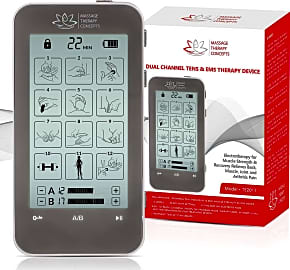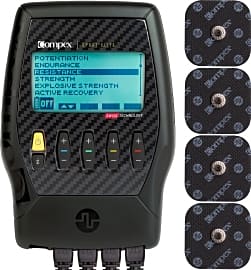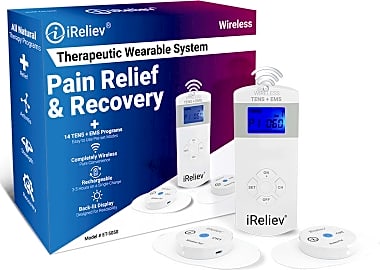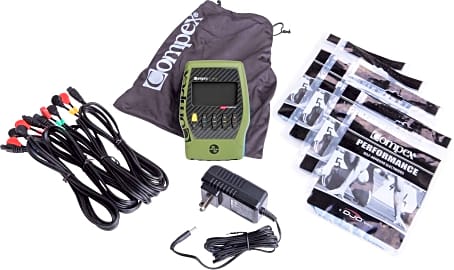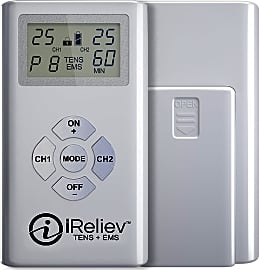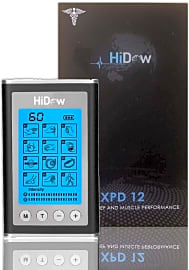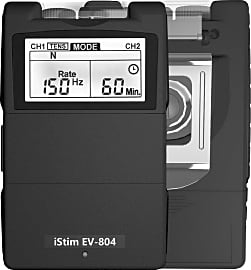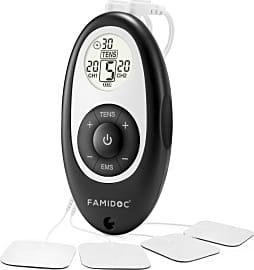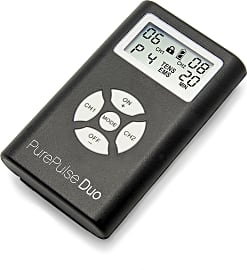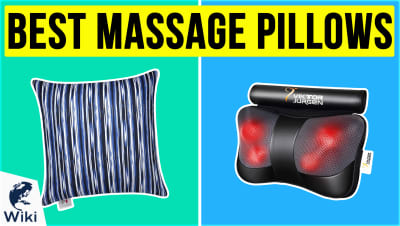The 10 Best Muscle Stimulators

This wiki has been updated 47 times since it was first published in March of 2015. Whether you're looking for a tool to aid in strength training, rehabilitation, or pain relief, one of these devices may be just what the doctor ordered. They send out pulses to stimulate muscles and help release pain-relieving endorphins. We have included everything from budget models to those suitable for athletes who want to up their game. When users buy our independently chosen editorial choices, we may earn commissions to help fund the Wiki.
Editor's Notes
January 03, 2020:
During this update, we replaced the Compex Sport Elite and Compex Edge with their newer iterations, the Compex Sport Elite 2.0 and Compex Edge 2.0. Both of these have more modes than the previous versions, providing the user with more treatment versatility. We also added the Compex Wireless USA 2.0, which forgoes the use of cumbersome cables, yet still offers just as much power as its wired brethren. All three of these devices come from a well-respected company in the industry and should last through years of regular use. We feel the need to point out that some people have complained that the Compex Edge 2.0 isn't powerful enough, so it you want strong pulses, you might be better served with another option.
The iReliev ET-5050 is another wireless model that we included during our previous update, and which we still recommend. It offers excellent value for the price when you consider the cable-free operation, high output strength, and variety of preset treatments. For a more affordable option, but one that is equally as effective, you can look to the iReliev ET-7070, which is essentially the exact same model, just in a wired configuration.
While some units, such as the Massage Therapy Concepts BD17093, have a lock that allows you to disable the control buttons during use to prevent you from accidentally changing settings mid-session, the iStim EV-804 takes things a step further and incorporates covers over the control buttons and adjustment dials.
It is worth pointing out that anybody considering buying one these devices should disregard any claims of building pounds of muscle mass and creating a rugged physique, as there is little, if any, data that backs this up. Instead, think of them as aids that can help to improve muscle endurance, rehab muscles that have atrophied or prevent it from setting in, push lactic acid out of the muscles after a workout, or provide a gentle warm up before you start performing some kind of activity to reduce the chances of sustaining injury. All of the units on our list also double as TENS units, so they can also help with pain relief, too.
Special Honors
Marc Pro Plus Designed with professional athletes in mind, the Marc Pro Plus is an effective unit that can be used for recovery, conditioning, and pain relief. It features two large dials that make it easy to control the intensity for each channel independently, and though pricey, most users see noticeable results immediately after using it. marcpro.com
Amrex MS324 The Amrex MS324 is a medical-grade model just like what you would find in a chiropractor or physical therapist's office. It produces pulsation, tetanize, surge, and reciprocal output to provide treatment versatility, and it has a patient stop switch so the person undergoing therapy can pause it at any time if they feel uncomfortable. amrexusa.com
History Of Muscle Stimulators
This paper was the result of extensive research and revealed that there were indeed many benefits and a variety of uses for electrical stimulation.
Electronic muscle stimulation, also known as EMS, goes back considerably further than most people might think. In fact, it goes back thousands of years before the invention of electricity. As far back as 2,500B.C., the Egyptians of the Fifth Dynasty were using electric fish to treat pain via muscle stimulation. This practice continued on with the Greeks and the Romans.
Much later on in the 18th century, an Italian physicist and philosopher named Luigi Galvani discovered that passing electrical currents through a frog's spinal cord resulted in muscle contractions. While it is common knowledge nowadays that the brain creates electrical impulses that are transferred to the muscles to create muscle movement, this was a radical discovery at the time and it prompted continuous experimentation by many universities.
In 1965, a paper published by Melzack and Wall entitled "Pain Mechanisms: A New Theory" examined the use of electricity as a means of therapy for pain and other problems. This paper was the result of extensive research and revealed that there were indeed many benefits and a variety of uses for electrical stimulation.
Not long after this in 1971, EMS made its first appearance in sport applications with experiments known as the Russian Currents. Soviet athletes were subjected to tortuously high levels of electrical discharge and it was found that this delivered muscle fatigue similar to the kinds seen after intense workouts.
Finally, in the late 1990's electronic muscle stimulation in home treatments started to gain in popularity with the use of wearable units as we know them today.
Uses For Electronic Muscle Stimulators
Today, electronic muscle stimulators have a variety of applications where they can be used to benefit our health and overall fitness level. Whether you are looking to activate muscle growth, alleviate pain, or recover after an intense workout session, EMS can be a helpful tool. Muscle stimulation units have been divided into two broad categories by the FDA - over-the counter devices (OTC) and prescription devices - and has been approved by them for a number of uses.
The key to building muscle mass and creating a stronger muscle is contraction.
Muscle stimulators can be used for muscle re-education in patients who have suffered an injury. It helps them build strength in severely weakened muscles before they start with traditional physical therapy methods. EMS forces muscle contractions in coordinated patterns to strengthen the cognitive link between the brain and movements.
Muscle atrophy is another area where EMS can really help. This decrease of muscle mass is often the result of some other medical condition, but electric stimulation can slow, or even prevent, muscle atrophy by keeping unused muscles active, especially in mobility-restricted patients. Along with muscle atrophy often comes a decreased range of motion. By using EMS in home and professional therapeutic applications, one can limit the range of motion loss while people heal.
Electric stimulation can also increase the blood flow to muscles, which has two beneficial results. It delivers vital nutrients necessary for muscle growth and recovery, plus it helps remove waste and lactic acid after a workout, which equates to less soreness and faster recovery.
In addition to the FDA approved uses, it is a commonly accepted belief that electronic muscle stimulation can be used by bodybuilders looking to increase strength gains, improve muscle tone, and give an overall more defined appearance to muscles. The key to building muscle mass and creating a stronger muscle is contraction. The more a muscle contracts, the more it will develop. In this way, EMS machines can be incredibly useful for training. Maximal EMS contraction can be up to 30% higher than maximal voluntary contraction. Using an EMS machine also allows you to bypass the body's natural energy conservation system, and activate more muscle fibers than would be physically possible manually.
How To Use A Muscle Stimulator For Strength Training
The most effective way to use an electronic muscle stimulator for strength gains is in conjunction with a traditional fitness routine. To aid in maximum muscle and strength development, the best use of an EMS unit is as a second strength training session in the same day that you do a traditional gym workout on that muscle. This will compliment your earlier training session and compound the effects. You should not do them one after the other, but rather give your muscle at least a four hour rest period between sessions. It is also helpful to use electronic muscle stimulation on all primary and auxiliary muscles used in your workout. This means if you bench in the gym, you should hit your pecs, shoulders, and triceps with EMS.
When using your EMS unit, you should perform 6 to 10 seconds of intense, continuous contractions followed by 50 seconds of less powerful pulsing for recovery. You can repeat this for 10 rounds on each muscle you want to train. As with any type of workout routine, you'll want to be fully warmed up from some stretching and light muscle use before starting, to reduce the possibility of injuries, cramping, and muscle soreness. You can even use the electronic muscle stimulation for warming up by using a low intensity setting with a one second on/one second off approach.
Since electronic muscle stimulation works directly on the muscle without putting any pressure or stress on joints, ligaments, and tendons, there is less chance of over training via this method as compared with two traditional gym workouts in the same day.


